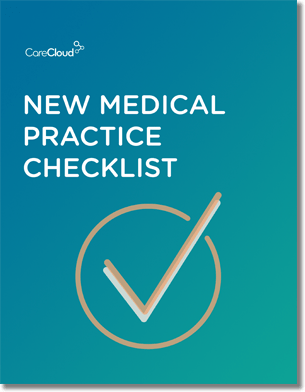Implementing an analytics system doesn’t have to be daunting. The right tools can help you create an environment where data is easily accessible to the entire staff.
Setting up this kind of system requires a forward-thinking attitude, an understanding of different analytics methodologies between different vendors and products, and not confusing insight with integration.
Power Your Practice is here to help. As part of our ongoing ‘Actionable Analytics’ series, we teach you how to implement a system that everyone at your practice is comfortable with, so staff members don’t have to dig nervously for boatloads of information.
Implement a System for Everyone
The value of analytics is in its usefulness. Implementing a system that gives you instant access to your data in an easy-to-read format is essential for integrating analytics into your daily operations. Getting all of your most valuable data in one place will simplify the reporting process.
Previously, compiling and sharing reports was a daunting task. Staff members would spend hours or days digging for information, compiling it, and then explaining it to each member of the team. With how time-consuming the process was, it was no surprise that reporting occurred only quarterly or annually.
However, advances in technology have changed the speed at which in-depth analytics are delivered and removed most of the manual work from the process, allowing your staff to focus on patients instead of reports. Now, practices can get actionable intelligence immediately from their analytics system to optimize their practice in real-time, instead of responding to data after the fact.
Your practice’s analytics system should deliver a centralized analytics unit to collect and share reports. It should simplify reporting by giving you the information you need in an easy-to-understand format that can be shared with the necessary staff members effortlessly. Members of your team should have a personalized dashboard that gives them instant access to the information most important to their tasks and responsibilities.
A comprehensive analytics system should:
- Provide instant reports and analytics at a glance
- Deliver data through the appropriate medium: graphs, ?gauges, real-time news feeds, charts, text messages, emails, ?scheduled reports, etc.
- Save report settings for faster reporting
- Keep a detailed history and library of past reports
- Supply multiple views for transactions, appointments, patient ?data, etc.
- Create standard ways to identify places for improvement
- Eliminate data silos
- Automate thresholds and triggers to alert the responsible ?party that action is necessary for things such as a decrease in appointment volume, increase in the amount of collections outstanding, etc.
- Provide effective data visualization so information is easy to understand, share and build into the organizational process, allowing members of the practice at every level to act on information
- Deliver in-depth trend analysis, standardized reporting and forecasting
- Comply with all HIPAA regulations and deliver uncompromising security standards
Implementing a system that can deliver all of these features across every aspect of your healthcare organization will make utilizing analytics second nature to your practice, instead of ?a dreaded task. Imagine having the ability to check patient outcomes, populations, payments outstanding and appointment volumes all in one place — and with just a couple of clicks. ?Easily identifying and comparing trends will make your staff more efficient, your practice more profitable and give your patients the best care possible.
Next week, we’ll go over how to enable your entire revenue cycle to streamline your practice’s payment process from start to finish.

Do you know what you need when setting up a new medical practice?



